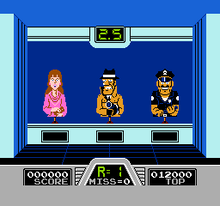You have bought into the mindset that competition = real world shooting. I think that is a false narrative.
I agree that while competition can help with some aspects of shooting skill building, not all of competition helps build real-world self-defense skills and some is actually counter-productive.
Also, I should have qualified my previous comment about the value of "draw times to target and splits" in the real world.
Obsessing about fractions of a second and small changes in group size are not productive. I agree that it's a mistake to assume that because one shooter is half a second faster, or slightly more accurate in competition, those differences will automatically translate to a significant real-world advantage.
There's certainly more to prevailing in real-world shooting scenarios than turning in fast shooting times.
...speed shooting at steel was completely at odds with real life...
I think it's easy to go too far in either direction with this topic.
There are certainly things one can learn in the process of becoming a proficient steel speed-shooter that will translate to real-world self-defense. But it's very important to understand that there are critical differences between what happens on the range during competition and what happens when someone is trying to kill you.
The video makes some good points, but IMO, is easily misinterpreted.
Here's what the takeaway should be, from my perspective: There is a basic level of pure shooting/gun-handling skill that everyone who relies on handguns for self-defense should strive to attain. Past that point, obsessing about incremental shooting improvements is not especially productive and the focus should change to shooting skills maintenance and the improvement of other aspects of self-defense that have less to do with gun handling.
Unfortunately, from what I see at the range, only a very few people ever manage to achieve a solid foundation of pure shooting/gun-handling skill and the vast majority don't even try to focus on the other aspects of self-defense.

